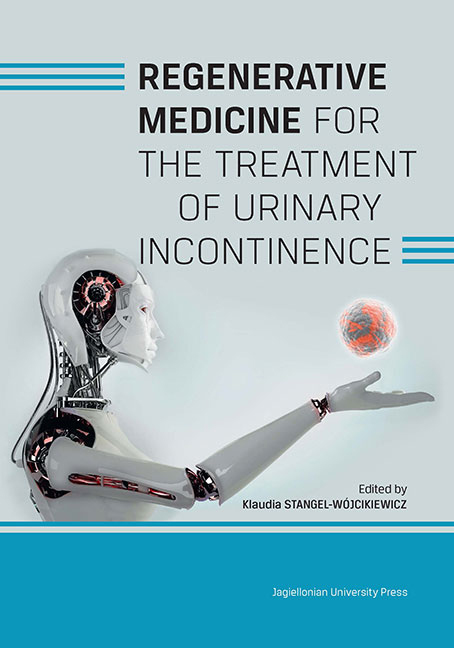Book contents
- Frontmatter
- Contents
- Preface
- Introduction
- Chapter 1 Urinary incontinence in women - outline of the problem
- Chapter 2 Anatomy of the urogenital system
- Chapter 3 Clinical types of urinary incontinence
- Chapter 4 Treatment of stress urinary incontinence
- Chapter 5 Regenerative medicine for the treatment of urinary incontinence
- Chapter 6 Virtual Patient system - simulations of clinical encounters for medical education. Case study of a woman with urinary incontinence
- Chapter 7 Development of a robotic tool aiding a new stem cell-based treatment for stress urinary incontinence in women
- Chapter 8 Difficulties and limitations of cell-based therapy for the treatment of urinary incontinence
- Summary
- List of authors
Chapter 8 - Difficulties and limitations of cell-based therapy for the treatment of urinary incontinence
Published online by Cambridge University Press: 03 January 2018
- Frontmatter
- Contents
- Preface
- Introduction
- Chapter 1 Urinary incontinence in women - outline of the problem
- Chapter 2 Anatomy of the urogenital system
- Chapter 3 Clinical types of urinary incontinence
- Chapter 4 Treatment of stress urinary incontinence
- Chapter 5 Regenerative medicine for the treatment of urinary incontinence
- Chapter 6 Virtual Patient system - simulations of clinical encounters for medical education. Case study of a woman with urinary incontinence
- Chapter 7 Development of a robotic tool aiding a new stem cell-based treatment for stress urinary incontinence in women
- Chapter 8 Difficulties and limitations of cell-based therapy for the treatment of urinary incontinence
- Summary
- List of authors
Summary
The results of studies on stem cell transplant to regenerate urethral sphincter muscles are extremely promising. Research projects carried out in Poland and other countries have provided much evidence supporting the hypothesis that stem cells can restore normal urethral sphincter function [1, 2]. Even in a relatively small group of female patients treated with this method at the Jagiellonian University Medical College satisfactory results have been achieved, suggesting that in the future this method can become one of the recognised therapeutic procedures offering successful treatment of women with SUI. A pilot project carried out at the UJ CM allowed the taking of further steps to improve the method for cell injection, as well as the choice of patients in which the chances for successful cell transplant are very high. Further studies should be aimed at identifying a target group of female patients by means of genetic profiling, and the choice or development of an optimal device for the injection of stem cells. To date, there is no standard method for the injection of MDCs into the urethral sphincter. Most described techniques are similar to those used for the injection of bulking agents, such as silicone or teflon. For example, the Lukanovic team in their study used the Sonoject Injection System for the ultrasound-guided injection of MDCs [3], while the Chancellor team used a prototype device from MayoCook. None of these injection systems has been officially licensed for the injection of MDCs to treat stress urinary incontinence. The imperfection of devices available on the market prompted the authors of the project carried out at the UJ CM to seek specialists who could develop a tool suitable for the precise injection of stem cells in the region of the urethral sphincter. Finally, an interdisciplinary team of engineers and computer scientists from the University of Science and Technology (AGH) and specialists from the UJ CM (clinicians, bioinformatics engineers, biotechnologists) designed a device which will meets the technical expectations of the physicians injecting stem cells into patients. Considering the efforts undertaken it is highly possible that in the near future this prototype device will be tested for the micromanipulation and injection of stem cells into the target site most suitable for the injection of autologous myoblasts.
- Type
- Chapter
- Information
- Publisher: Jagiellonian University PressPrint publication year: 2016



